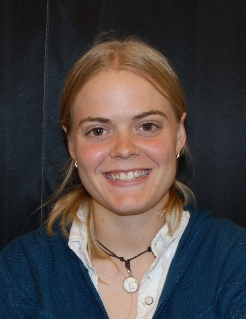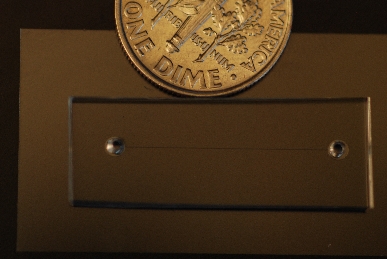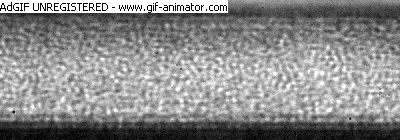Clare Boothe Luce Assistant Professor of Physics, Mount Holyoke College
PhD, University of Pennsylvania, 2010
MS, University of Pennsylvania, 2006
BA, Bryn Mawr College, 2004

Current research interests: microfluidics, colloids, biophysics, rheology of complex fluids
Faculty Collaborators: Jerry Gollub*, Paulo Arratia, Paul Janmey, Arjun Yodh
*co-advisor

Complex fluids possess structure on a mesoscopic length scale between the molecular scale and the macroscopic scale. Examples include foams, colloidal suspensions, polymer solutions, emulsions, etc. While the macroscopic and molecular scales may be well understood, fluids may have complex properties solely due to underlying mesoscopic structure. Think about a bottle of soapy water with a layer of air at the top. The molecular properties are established: the water is well understood, the air is well understood. The macroscopic properties are established: the relative percentages of water, soap, and air. However, a shaken bottle will have much different behavior than an unshaken bottle, simply due to the presence of the mesoscopic foam bubbles.
Microfluidics offers unique opportunities for studying various phenomena such as complex fluid flow. Most importantly, since microfluidic channels are small, flows are kept to low Reynolds number, making flows laminar (not turbulent) and easier to interpret. The device size also makes microscopy a valuable tool for studying flows, in other words, we can directly see the microstructure of the flows of interest. In a complex fluid, one may expect confinement effects to become important as the channel size approaches the size of the mesoscale structure. Indeed this can be the case, and is an additional important area of inquiry in microfluidics, especially from a practical standpoint as microfluidic devices become more common in clinical settings.
Microfluidic Rheology of Microgel Pastes
with Emilie Verneuil
The complex fluid we study is a dense suspension, a “paste” of NIPA particles. NIPA particles are tiny gel particles, about 1 um in diameter, suspended in water. We flow these particles into a channel, and can take a video of the flow. Using this video, we can extract strain rates. As we are using a well-defined geometry and pressure drop, we know the shear stresses present in our flow. Thus it is possible to capture actual rheological data simply by looking at a video.
One neat aspect of these particles is that they can swell or shrink with changes in temperature. So we can change the relative density of particles without changing the sample. In essence, we would like to see how the flow curves (stress vs strain rate) change as the volume fraction changes, especially as we sweep through the jamming point.

Clogging in a Model Porous Medium
with Emilie Verneuil and Tim Huber
By fabricating networks of channels we create a toy model of transport through porous media. Clogs occur at very low particle densities. We are studying dependence of clog formation on flow rate, particle size, volume fraction, and surface properties.
clog
Cell Durotaxis on Gradient Gels
with Qi Wen
It has been shown that cells migrate to stiffer substrates. Using microfluidics, we have been able to fabricate gels with controlled stiffness gradients. Quantitative cell studies are underway in the Janmey group.
